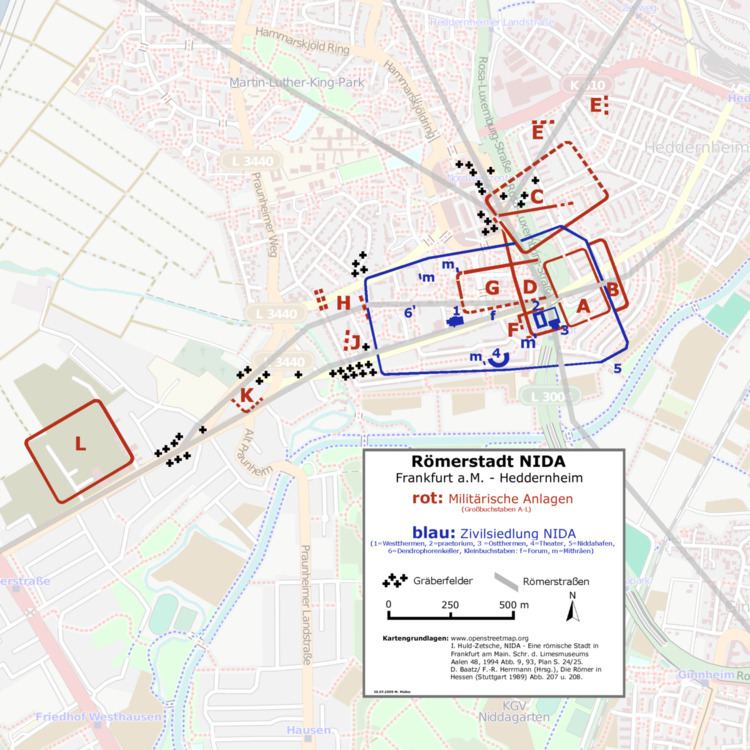 | ||
Weather 6°C, Wind NE at 11 km/h, 60% Humidity | ||
Nida was an ancient Roman town in the area today occupied by the northwestern suburbs of Frankfurt am Main, Germany, specifically Frankfurt-Heddernheim, on the edge of the Wetterau region. At the time of the Roman empire, it was the capital of the Civitas Taunensium. The name of the settlement is known thanks to written sources from Roman times and probably derives from the name of the adjacent river Nidda.
The first traces of a temporary Roman settlement date to the reign of Emperor Vespasian in the years 69 to 79. Traffic routes throughout the Rhine-Main-Area came together here and the Romans sought to control and protect these. Traces of eleven military forts (castella) have been found, but most of them appear to have been temporary. The most solidly fortified was 'Castellum A', which was constructed of stone and which seems to have been abandoned by the military around 110 AD. However, it formed the core of the town which evolved around it. At its peak, during the peaceful 1st century AD, Nida probably had a population of 10,000 and was one of the biggest Roman settlements in the area enclosed by the Limes. It had a market, public baths, city walls and a theatre.
Nida appears to have gone into decline gradually from about 259-260 AD in the face of the invading Alamanni. Recent research on coins found there shows that there might have been people living in the city up until about 275.
The remains of Nida survived for centuries afterwards and were visible in the so-called Heidenfeld ('heathens' field') near Heddernheim until at least the 15th century, when walls above ground began to be broken down to be used as building material by people from the nearby villages. Extensive underground remains, with walls several metres high, were known to have survived untouched in the field and were subject of a few archaeological excavations.
However, their destruction began with the construction of the "Römerstadt", a new residential suburb, in 1927-9 and was completed during the "Nordweststadt" building project from 1961 to 1973. Little remains of Nida today: only two pottery kilns, a well, and a little portion of the city walls have survived. Most of these finds are in the archaeological museum in Frankfurt.
